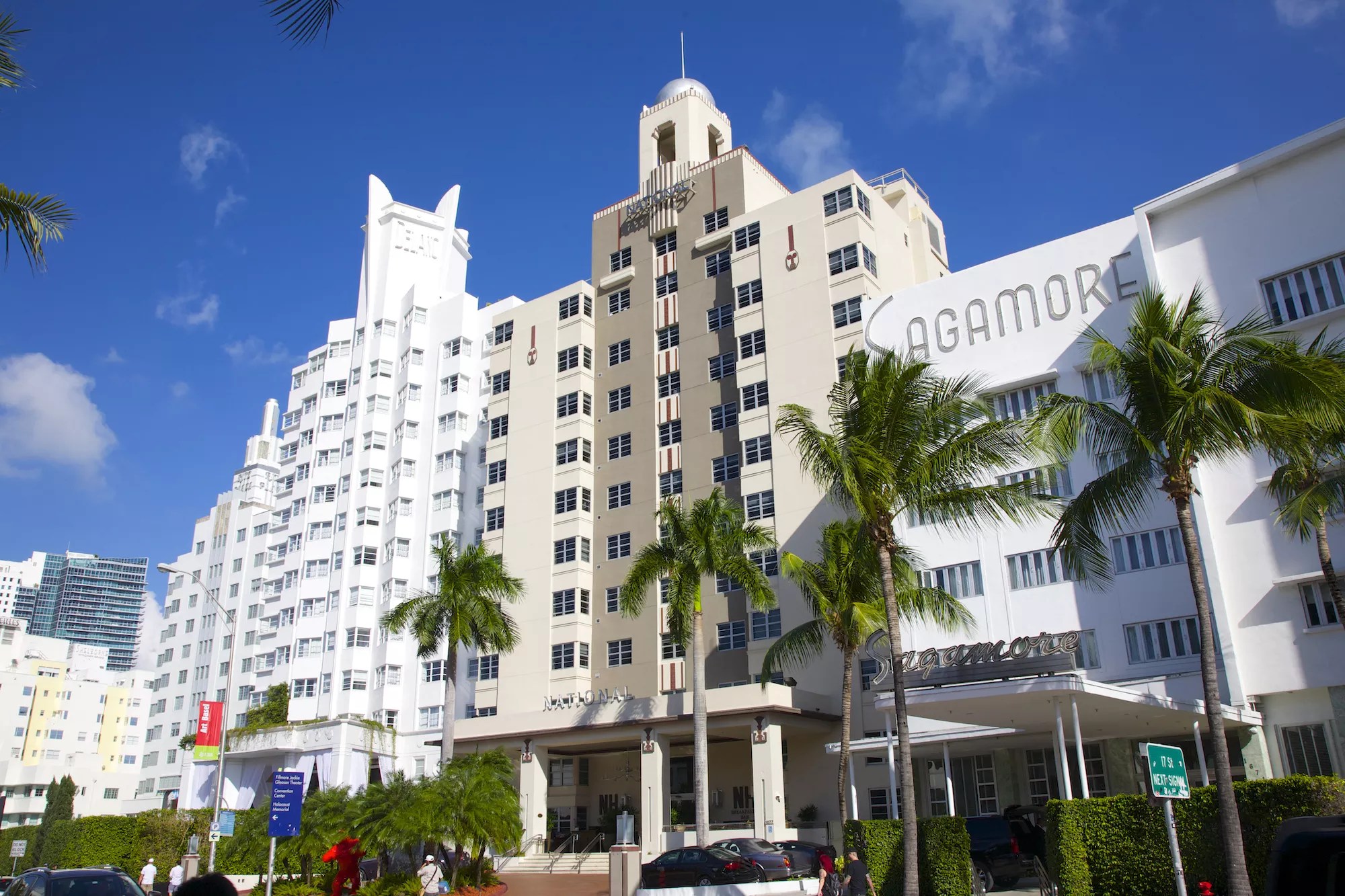
Photo by Barry Winiker/Getty Images

Audio By Carbonatix
Though it didn’t start here, Miami and the Beach are home to the highest concentration of art deco architecture in the United States. How did that happen? Miami was always a tourist destination that was a bit free-wheeling, and during the Prohibition era, Miami was no different. The colorful and lively architecture, led by Carl Fisher’s vision for Miami, was an attractive and inviting contrast to the gloom of the Great Depression and took over the area beginning in the 1920s. While the official art deco neighborhood in South Beach is about one square mile, there are plenty of other buildings to explore and admire around the 305.
Let’s review the criteria and common characteristics to explore what qualifies a building as an art deco building. Some telltale design details include geometric or zigzag shapes, bright colors, terrazzo floors, neon touches, eyebrow ledges over windows and doors, recessed staircases, and ornate materials. In Miami, it’s fair to say many of our bright art deco colors skew toward pastels that complement the sunrise and sunset. It’s also worth mentioning that contextuality is another signifier of well-done deco – it should look like it exists right where it was meant to be.
With that primer, let’s get into it.

The Albion’s façade is modeled after a 1930s ocean liner.
Photo by Phillip Pessar/Flickr
We’re thankful for you. Are you thankful for us?
We feel thankful for our staff and for the privilege of fulfilling our mission to be an unparalleled source of information and insight in Miami. We’re aiming to raise $30,000 by December 31, so we can continue covering what matters most to this community.
Help us continue giving back to Miami.
Albion Hotel
1650 James Ave., Miami BeachSituated on Lincoln Road, the Albion Hotel is a downright fun way to experience the kitschy side of art deco. Modeled as a 1930s ocean liner with a playful execution – the peek-a-boo portholes, ahem – the hotel is like a trip back in time. The structure combines rounded corners, exaggerated fin-shaped structures supporting the signage, and porthole circles. Some refer to this Miami style of art deco as tropical deco, and it’s visible in many buildings on the Beach as a design play off of the historic ocean liners that used to pass by. The Albion, owned by the Rubell family, underwent a renovation within the past decade to elevate the South Beach icon to reflect nautical luxury. The Alfred I. duPont Building is a beacon of art deco opulence in downtown Miami. Photo by Phillip Pessar/Flickr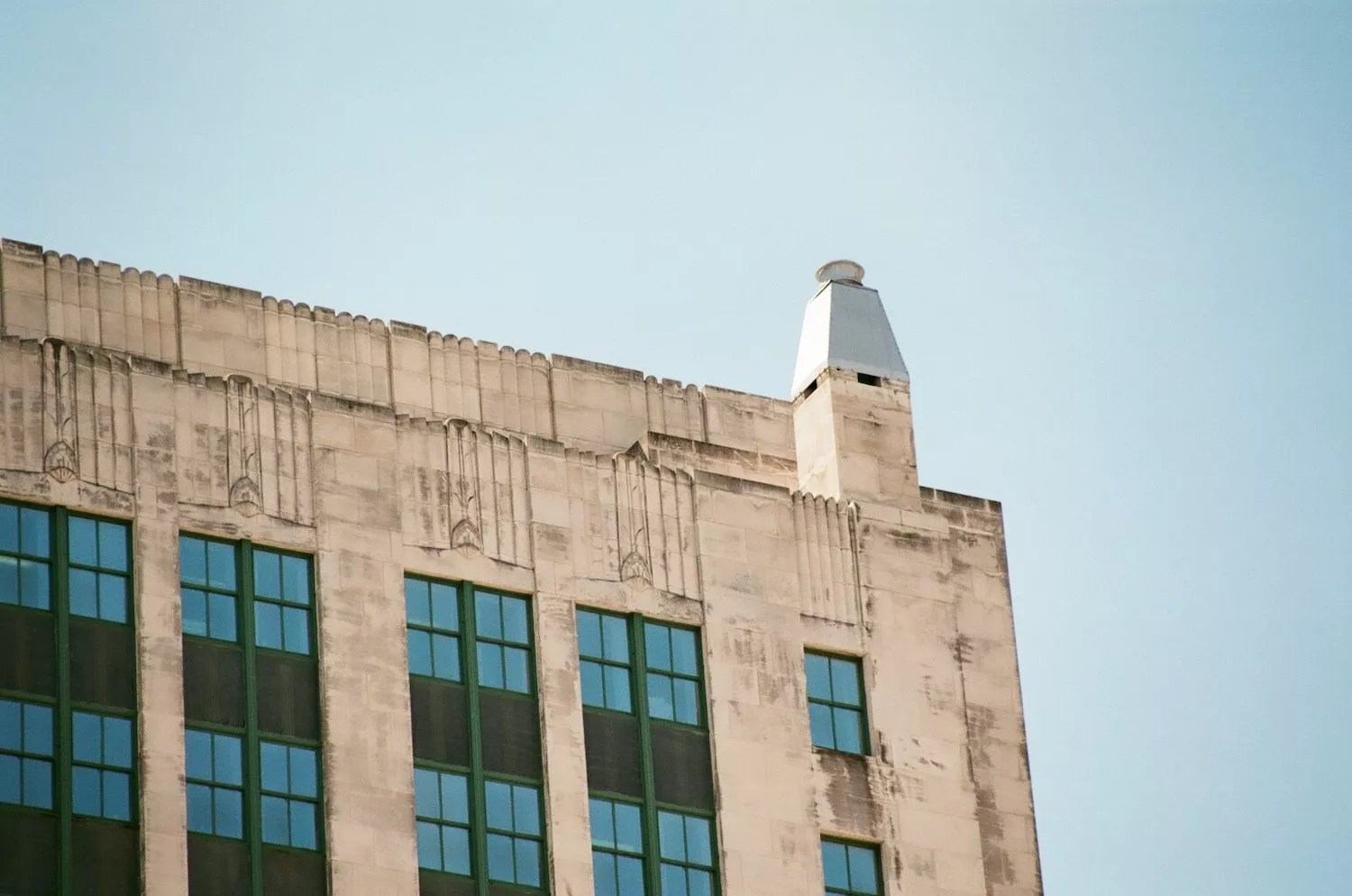
Alfred I. duPont Building
169 E. Flagler St., MiamiThe exterior of the DuPont building is beautiful, but if you’ve ever toured the inside of the building, you know the Gatsby-esque design details that await. Constructed in the late 1930s, the DuPont building is immersed in excess, with rich marble walls and floors, ornate fixtures, rich cypress wood, gilded accents, and the pièce de résistance, the walk-in safe. The DuPont building was a beacon of opulent deco design when downtown Miami was a booming commercial hub. So, while it might seem out of place now, in its heyday, the contextuality was right on point. The Bass’ façade takes a more simplistic approach to its art deco design. Photo by Zachary Balber for the Bass, Miami Beach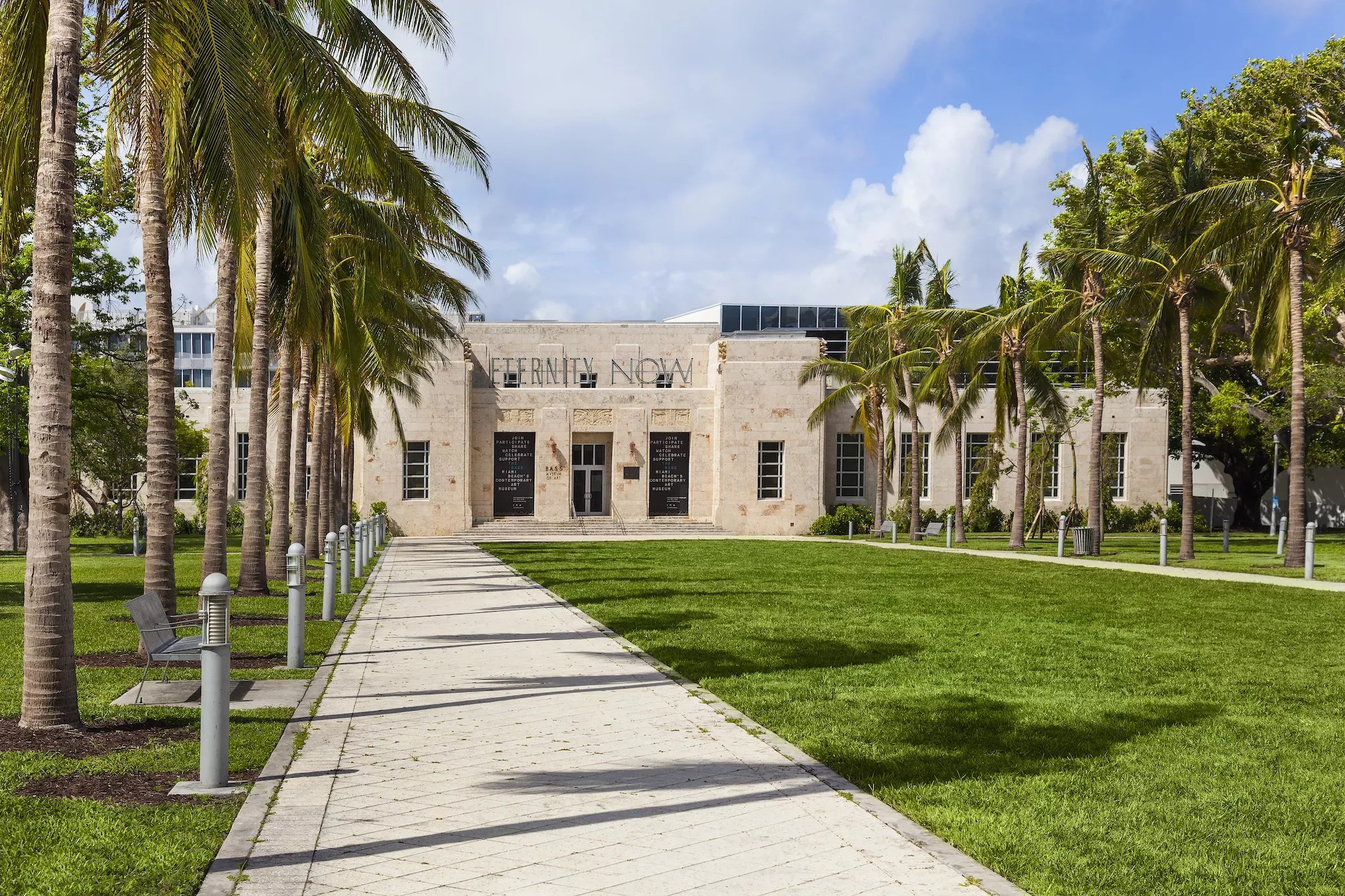
The Bass Museum
2100 Collins Ave., Miami Beach With its gloriously designed limestone façade infused with coral, the Bass was initially built as the public library and is another one of the more simple examples of art deco. Lacking the neon, bright colors, and zigzag or eyebrow-style design accents seen elsewhere, the Bass does have ornate façade detailing and clear geometry elements that help to classify this building better. Its gorgeous exterior is a perfect example of art deco contextuality, with the rich limestone making a statement before you even step into the building. The Crescent is one of several art deco buildings designed by architect Henry Hohauser. Photo by Peter Blottman Photography/Getty Images
The Crescent Hotel
1420 Ocean Dr., Miami Beach Right across from Lummus Park, you’ll spot a strip of small hotels drenched in deco details, sporting the geometric accents, pastel color palettes, and whimsical details we automatically associate with art deco. That’s where you’ll spot the Crescent Hotel, an art deco gem designed by Florida architect Henry Hohauser, who designed dozens more buildings on the Beach that fall into deco design standards. Now operated by Hilton Vacation Club, the art deco elements from the building’s impetus in the 1930s have been restored and protected with full interior renovations. Fun fact: The Crescent Hotel isn’t the only art deco building Hohauser made for Miami. A new exhibit highlighting his impact on Miami Beach architecture launched at the Art Deco Museum in South Beach in November.
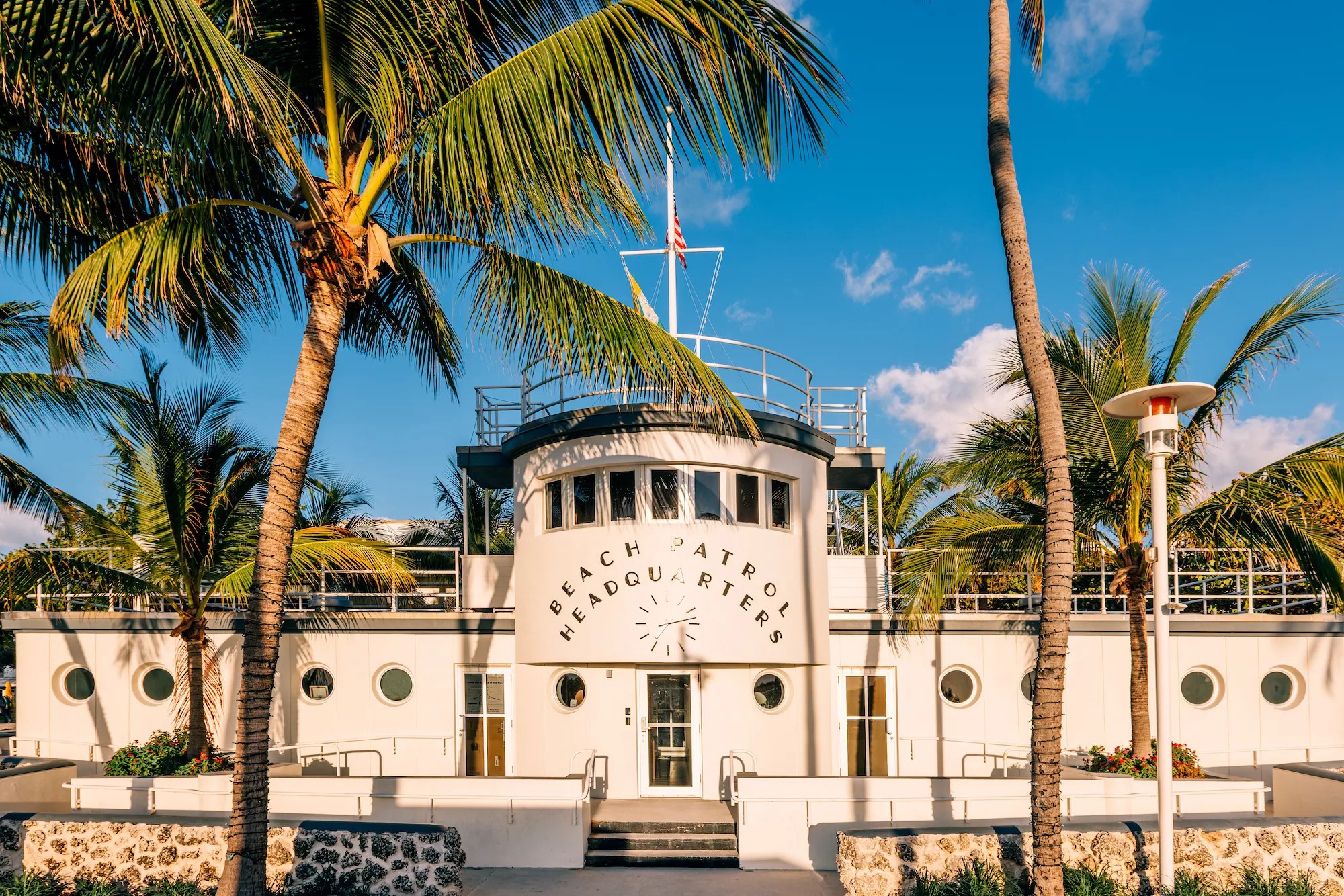
The famed Miami Beach Patrol Headquarters dates back to 1934.
Photo by Alexander Spatari/Getty Images
Miami Beach Patrol Headquarters
1001 Ocean Dr., Miami Beach From your initial glance at the Beach Patrol headquarters, you’ll notice the portholes and nautical details bring a maritime-deco design to life. Restored, renovated, and nestled on the corner of Tenth Street and Ocean Drive, this striking building is the beach-patrol hub for lifeguard stations from South Pointe up to 85th Street, dating back to 1934. One of the more than 800 art deco buildings in Miami and Miami Beach, this unique structure was envisioned by architect Robert Taylor and blends art deco with Miami’s other leading design style, MiMo. Even civic buildings like the U.S. Post Office in Miami Beach got the art deco treatment. Photo by tovfla/Getty Images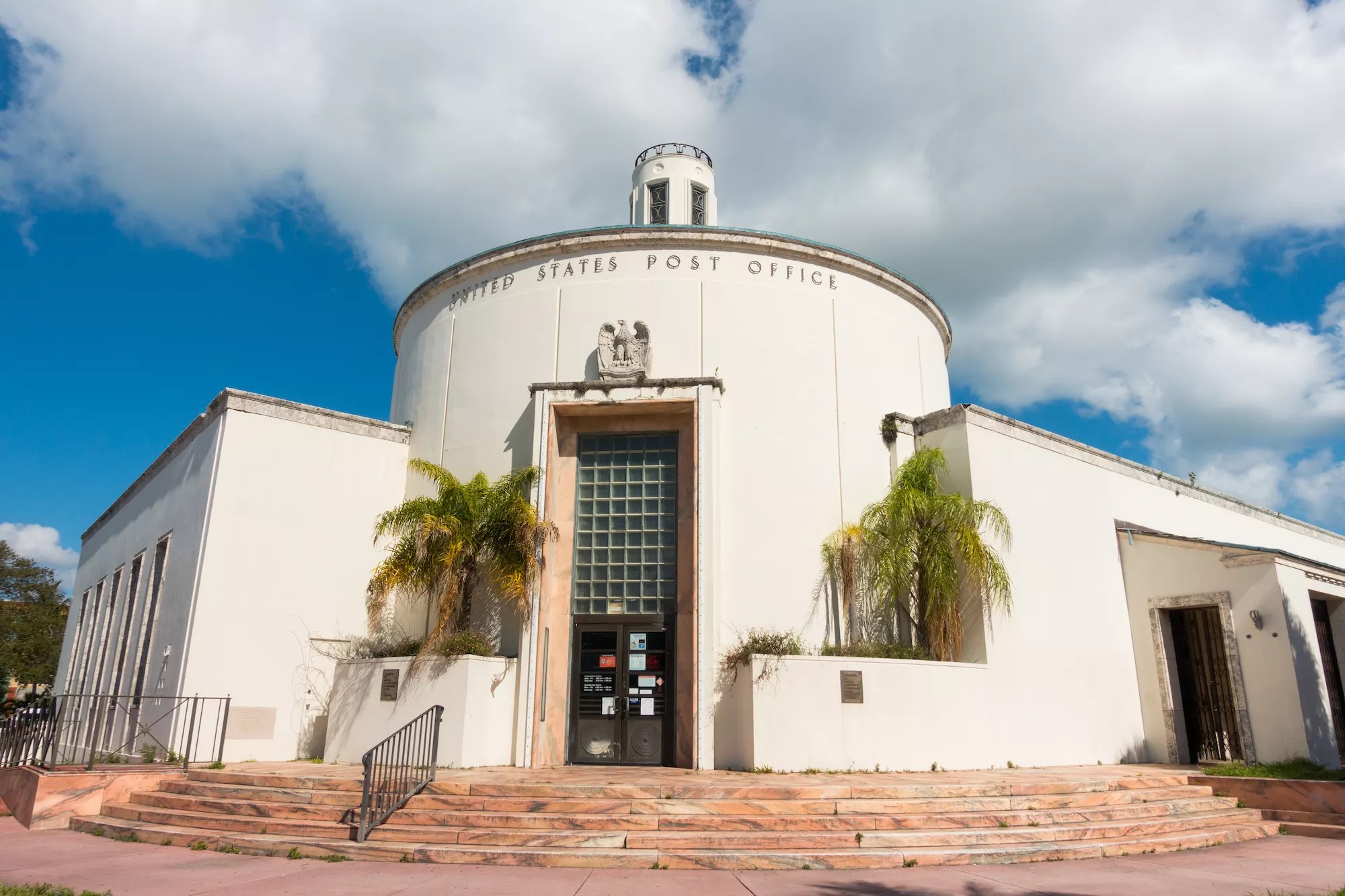
Miami Beach Post Office
1300 Washington Ave., Miami Beach Also designed and constructed in the heart of the Depression, the ornate and glitzy Post Office building was built to complement the influx of art deco architecture that soon overtook Miami Beach. Since its opening, it has remained in operation for close to 100 years. While you won’t find pastels on this building, you will see a clear incorporation of geometric details, from the round vestibule, which houses the lobby of the Post Office, to the ornate interior details (don’t forget to look up for a gorgeous and colorful ceiling mural), rose quartz wall panels, and gold mailboxes. Miami City Hall was once home to the seaplane terminal for Pan Am Airlines. Photo by Joe Raedle/Getty Images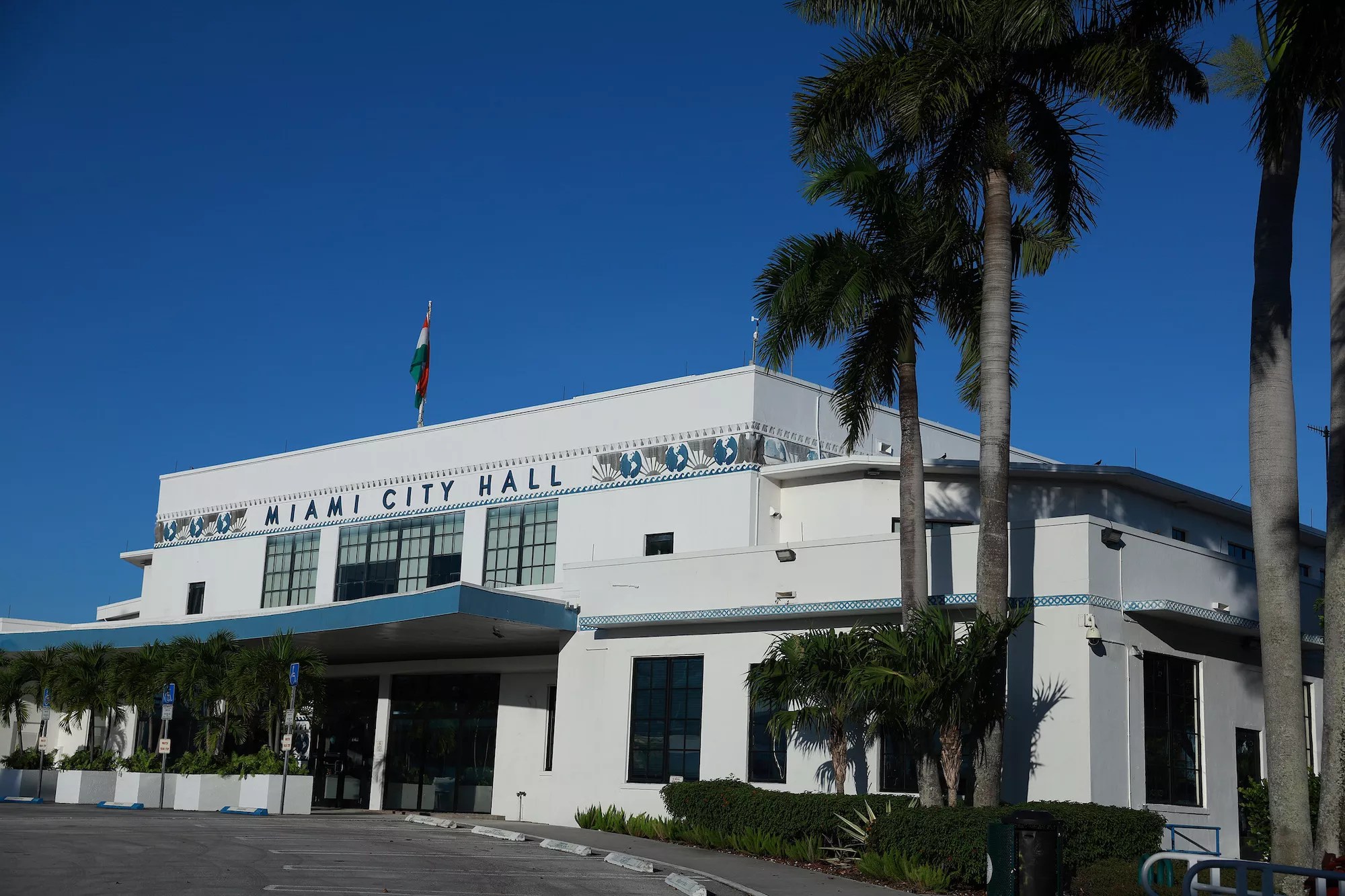
Miami City Hall
3500 Pan American Dr., Coconut Grove The Coconut Grove building, which has served as City Hall since 1954, has a decadent deco history. Originally built as the seaplane terminal for Pan Am Airlines, this striking building was built in the heart of art deco construction in 1934 and maintains some of the style’s signature characteristics. Curves, long horizontal lines, and angular geometric symmetry are obvious on the building’s façade, and the signage details and signature shapes make this one a top art deco contender. Further detailing, like the globe molding, adds to the building’s history and thoughtful design. Despite its neoclassical elements, the Miami-Dade County Courthouse remains a beautiful example of art deco architecture. Photo by CHUYN/Getty Images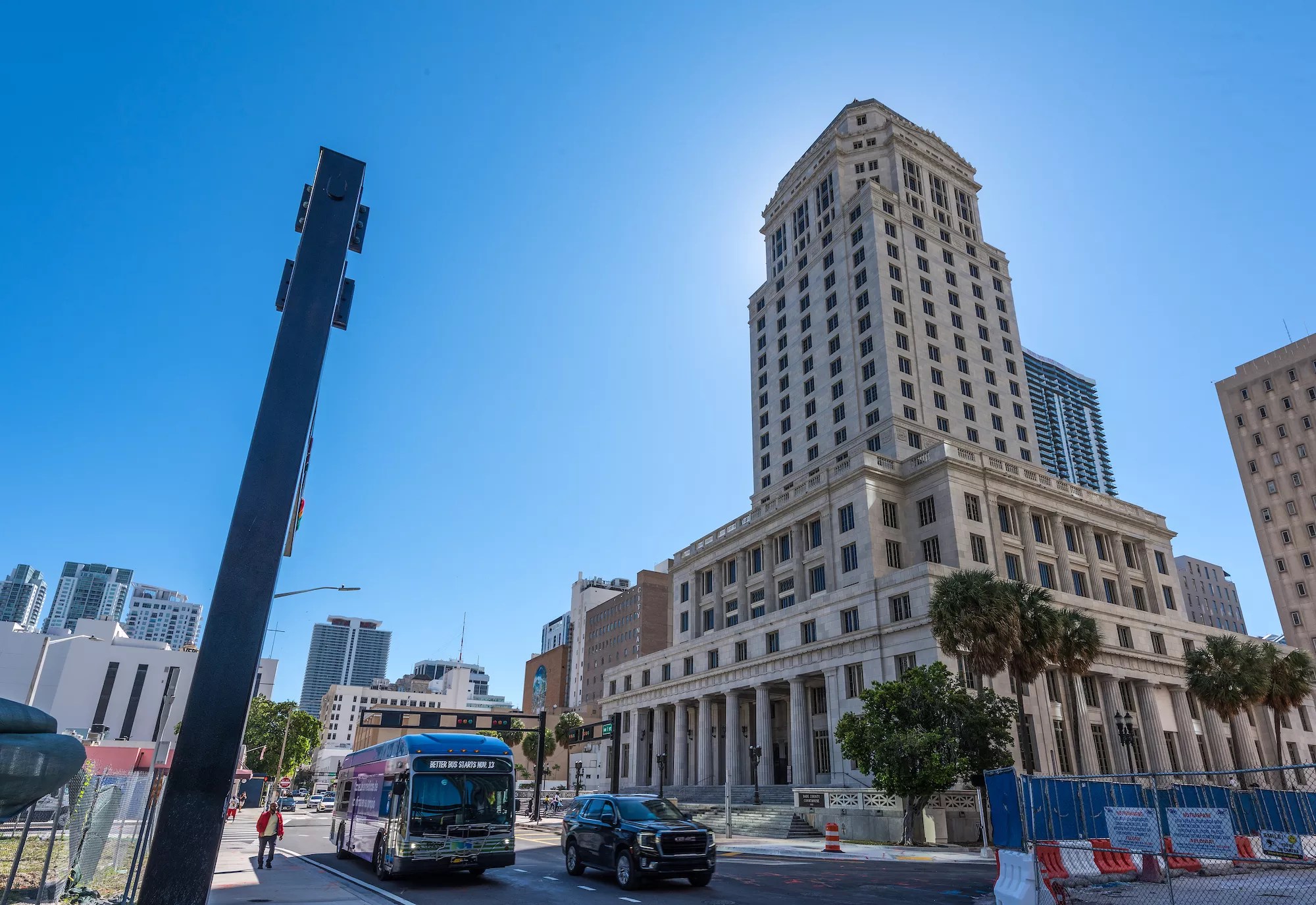
Miami-Dade County Courthouse
73 W. Flagler St., Miami South Florida art deco comes to life at the courthouse of downtown Miami, where deco elements such as geometric details, decorative features, and overall design opulence make the first high-rise building to be constructed in Miami to fall into the art deco design category, despite neoclassical structural elements. Incorporating rich materials, the 1928 structure recently went through restoration of 10,000 terracotta exterior tiles, slate and granite façade replacement, and roof repairs.
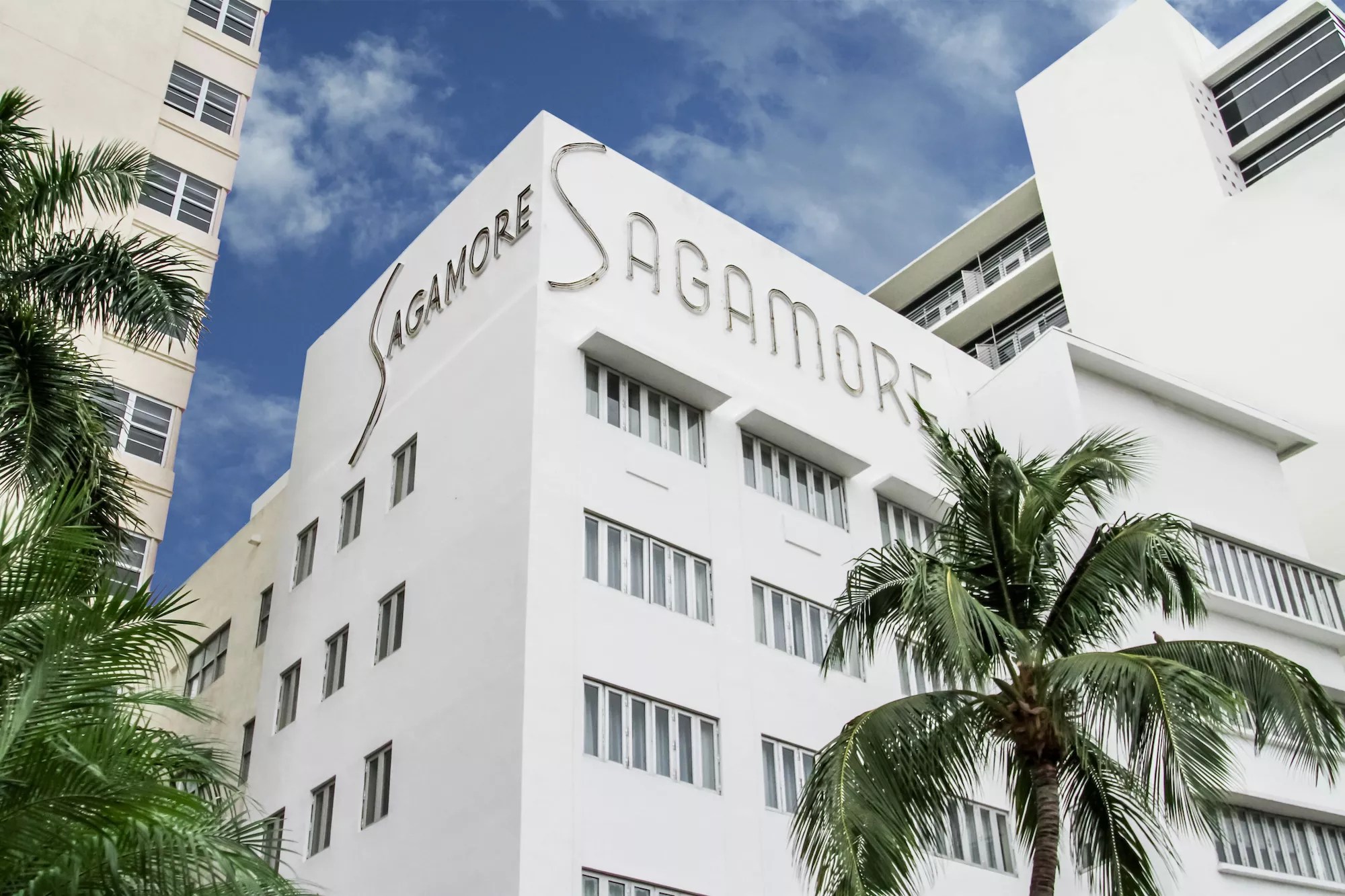
Don’t let its small façade fool you; the Sagamore is a great example of art deco done with restraint.
Sagamore photo
The Sagamore Hotel
1671 Collins Ave., Miami Beach There’s no shortage of deco details when you step into the small but mighty Sagamore Hotel, situated right in the center of South Beach. Built in a U-shaped layout in 1948 by architect Albert Anis, the Sagamore is an example of art deco done with restraint. Simple and clean by design, the commonly referred to “Art Hotel” makes up for its pared-back design with an over-the-top art collection. The Webster is one of the best examples of art deco on Collins Avenue. Photo by Phillip Pessar/Flickr
The Webster
1220 Collins Ave., Miami Beach With pastel details, perfect symmetry, and geometric details, the Webster is a textbook example of art deco on Miami Beach’s Collins Avenue. Dating back to 1939, the building is another Hohauser structure that initially served as a four-story hotel and converted into the flagship location for high-end luxury shopping in recent years, aptly called the Webster. The repurposing of the building resulted in an interior redesign to open up the spaces, but the façade of the building was restored to its original art deco glory.
Any ten-best list is a starting point for criticism – but that’s okay! Best, like beautiful, is ambiguous and in the eye of the beholder.
Let’s also acknowledge a few art deco icons that have either unknown futures, have been re-envisioned entirely, or have been gutted and torn down. We’re looking at you, Delano, which never reopened after the pandemic closures; Shore Club and the Raleigh, which sit in almost total redesign and modernization stages with Auberge Hotels and Rosewood Hotel Group, respectively; the Shelborne, which is set to be restored and remain true to its original designs by Proper Hotels; and the Tides, an absolute art deco dream by Dixon, which underwent stunning and well overdue restoration led by Kelly Wearstler but suffered extreme damage from Hurricane Irma in 2017. Also, the Coconut Grove Playhouse, whose fate remains uncertain.
It can be easy to blame commercial development and, ahem, money for the changing façade of Miami’s art deco buildings. It’s also key to remember that it was a money-loving magnate who decided to change the existing look of Miami into the art deco capital of the U.S. in the first place. Carl Fisher, as in Fisher Island, led the charge to drain Biscayne Bay with his vision of tourism and personally recruited Hohauser and Dixon, who also designed the Raleigh, along with more than 40 hotels on the Beach, including the Ritz, to create many of the buildings after art deco was introduced at the 1933 Chicago World’s Fair after roaring success in the 1925 Paris Fair.